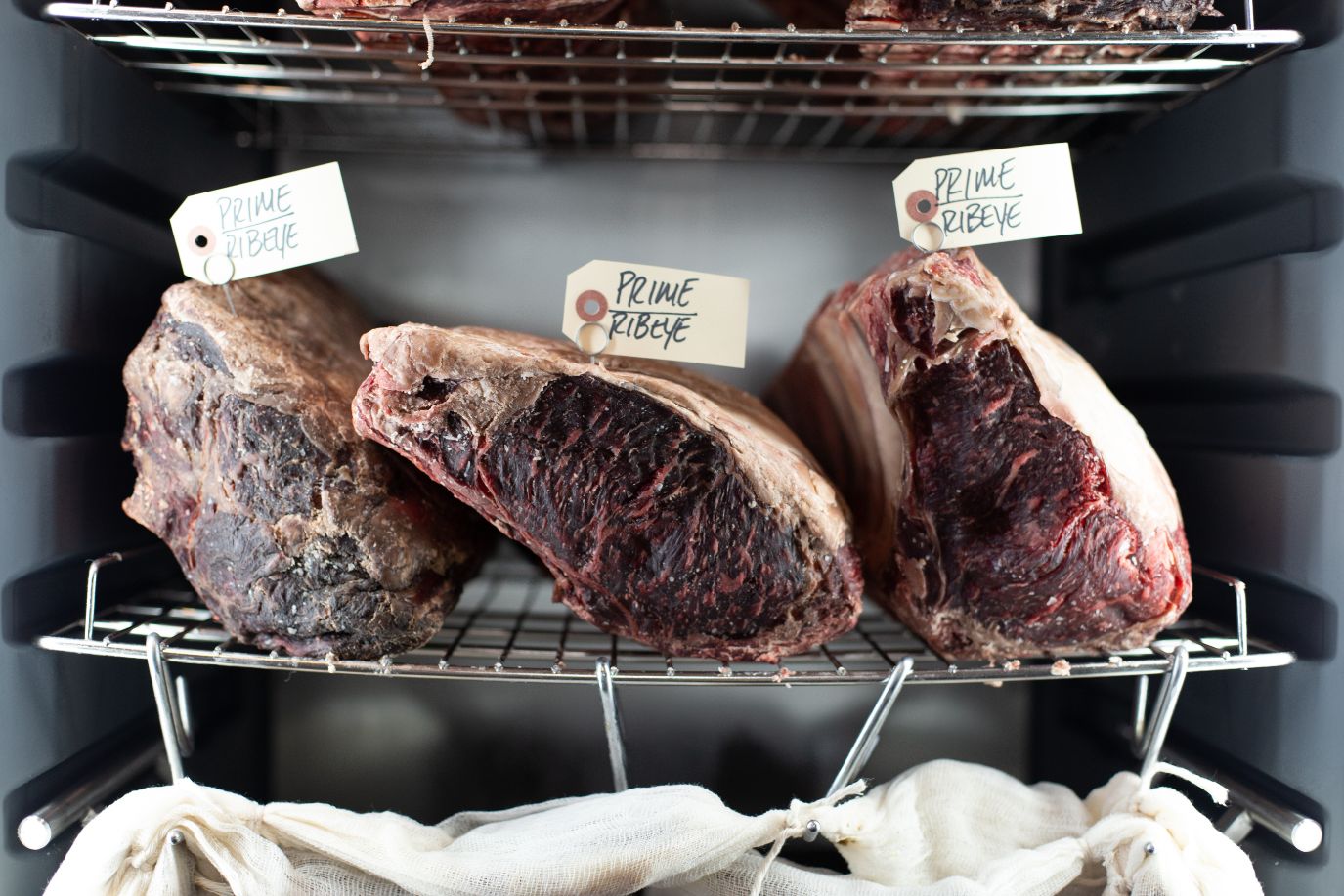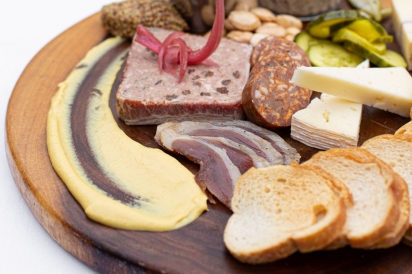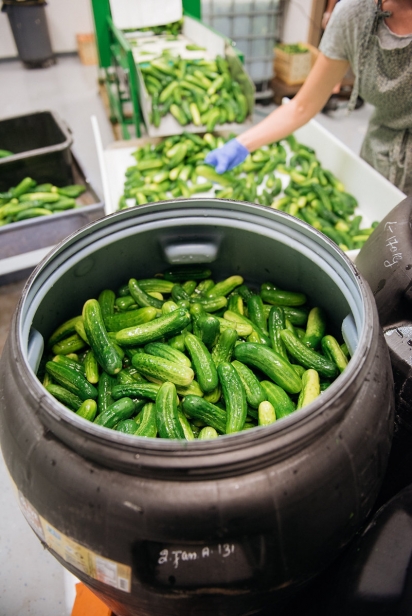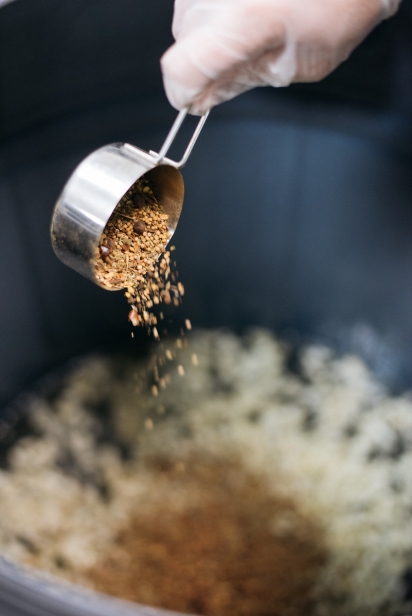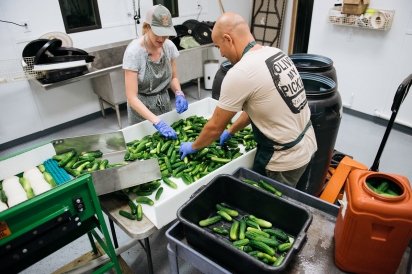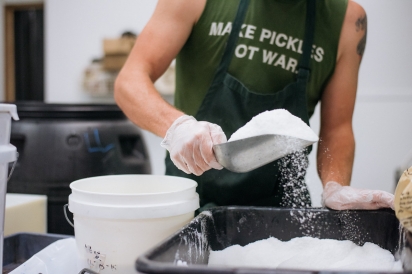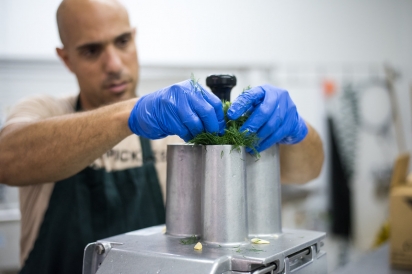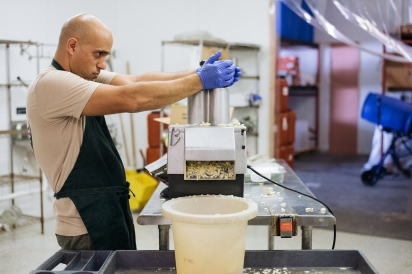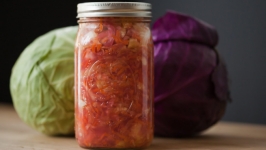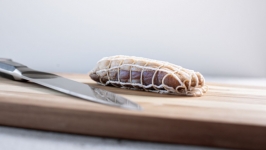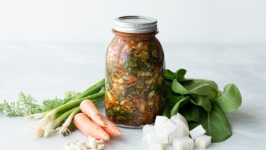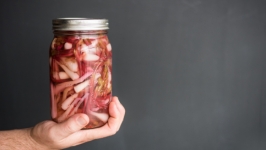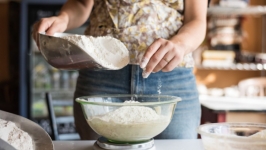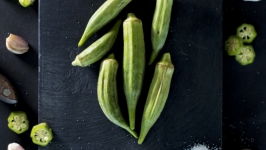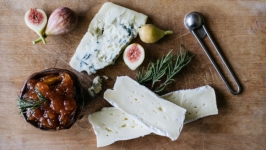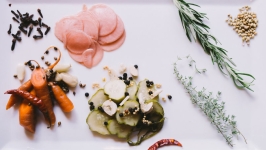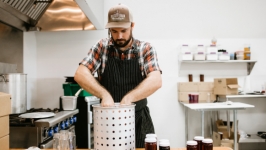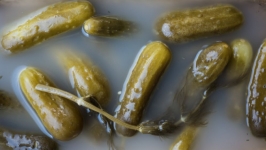Salt as a Food Preservative
Salt. It’s the basis for one of the oldest methods of food preservation in the world. And it is still popular, becoming even more so as the interest in traditional preservation processes grows. But why is that – especially given so many other methods now available to us?
For starters, according to Chef Brian Whittington of Preserved Restaurant and Chop Shop Artisan Butcher in St. Augustine, essentially “all you really need to preserve anything is salt.” He says that salt curing, the process of preserving meat by pulling out moisture while creating a lower possibility of bad mold or bacteria growth, dates back to roughly 200-300 BC. It was widely used before the invention of refrigeration, and Whittington says the ancient method has made a “solid return” in the last 20 years, as chefs have begun to refocus on fundamental techniques such as curing, pickling and aging.
The reason the method persists today despite the fact that we have regular access to refrigeration has little to do preservation. “Salt curing simply makes meat taste better,” says local butcher Andres Hernandez of Cline’s Custom Meats in San Marco. “The flavor concentrates as the meat loses water, and enzymes naturally present in the meat break it down and cause the meat to have a higher concentration of free glutamates, which are responsible for our taste of umami, or savoriness.”
The process also helps to preserve the color and texture of meat, seafood and even some poultry. It is used by Whittington, Hernandez and Chef Kevan Kimball of 13 Gypsies in Riverside, who calls it “THE fundamental method of [making] charcuterie.”
All three start with kosher salt, as it does not contain any additives. Depending on what is being cured, pink curing salt containing nitrates – which also have antimicrobial effects and can help maintain the pink or red hue associated with cured meats – may also be used (or used instead). However, Kimball says that “a standard dry cure is just the starting point to adding flavor when it comes to salt curing meat. Spices, herbs and even liquids like citrus juices or vinegars can be rubbed over the exterior of the muscle to impart flavor and aroma. Encasing whole muscles in a mixture of spices even helps protect from unwanted bacteria growth.”
In fact, Dr. Andrew J. MacIntosh, Assistant Professor in the University of Florida’s Department of Food Science and Human Nutrition, notes that while some recipes are literally just salted meat and fish or brined vegetables, salting is often combined with other mechanisms. For proteins, options include drying and adding nitrates (as aforementioned); for vegetables, they include lactic acid fermentation, which work together with salt to make food safe for consumption. “The reason being,” he says, “if we use only salt, we would require a ridiculous amount of salt, like 20% by weight or higher, in order to make it stable – which is done in some recipes.”
Preserving foods using these methods is quite versatile, as illustrated by what these businesses offer. Kimball says of the charcuterie served at 13 Gypsies, “if it’s on the menu, we are most likely producing it ourselves.” Chop Shop also carries a large selection of house-made charcuterie, and Whittington says “the largest sellers [are] Pâté De Campagne and House Duck Prosciutto, but by far our in-house 28 Dry-aged Prime Ribeye and New York Strips seems to capture peoples’ attention the most.”
However, it does require some special equipment, especially for commercial purposes. Whittington notes “you basically need a sterile environment that controls humidity and temperature. We use a drying chamber that controls humidity and temperature while also controlling bacteria growth with a UV filtration system. Our chamber also cycles the air out every 60 seconds.”
As far as regulation of commercial products made using these methods, Dr. MacIntosh says, “there are so many ifs, ands and buts … the USDA comes down on ‘is it safe?’ and depending on the pH, and whether you're eliminating oxygen, there's different sets of regulations for your food.”
Whittington notes that based on his experience, “the USDA and Health Inspector will be looking for a HACCP program. This stands for Hazard Analysis Critical Control Point. It is basically documenting the process from start to finish to make sure there is no area that would allow anything to go bad. This again mostly looks at temperature and moisture.”
In addition to meat, seafood and poultry, salt can also be used to preserve produce, especially vegetables. However, the process is a bit different than what many folks might think of, as there’s no vinegar or canning involved.
“Lactic acid fermentation is the process by which vegetables are preserved with salt water,” says Charlotte Tzabari, co-owner of Olive My Pickle. “Lactic acid bacteria is the ‘good guy’ type of beneficial bacteria that is formed in the process.” She notes that generally speaking, the salt-cured vegetables available today are lacto-fermented. “There really isn’t a method to preserve with salt water that’s NOT lacto-fermentation. Any alternative preservation processes would involve vinegar,” says Tzabari. This again goes back to McIntosh’s point of combining salt and lactic acid (either by adding it or letting it occur naturally). “Because if it was only salt, you would require so much that it would be less palatable (but these recipes do exist) … you can mitigate the amount of salt by combining it with lacto.”
All of the products Olive My Pickle sells are made using this process, which needs four essential elements to work: salt, an oxygen-free environment, temperature and time. Tzabari says she’s found that a fine, pure, natural sea salt works best. Certain vegetables, such as green cabbage, which is hearty and porous, are easier to preserve this way than others. Cucumbers, for example, have a more delicate skin and higher sugar levels, both of which can affect the end product.
Elaborating on the “good guy” bacteria, Tzabari says, “fermentation creates naturally occurring probiotics in its process. The process also eliminates all pathogens and bad bacteria. Probiotics are scientifically defined as outside microbes that confer a health benefit to [their] host.”
“Probiotics are like a combination of a personal trainer and an accountability coach,” Tzabari says. “They instruct, sharpen, improve, drill and keep the resident microbiome in a high performance state so that it can act as the guardian of your health.”
And while people have also been curing vegetables with salt for thousands of years, as with meat, there’s a renewed interest in the process, and in pickling in general. “On a lifestyle level, we’ve all seen at home activities like cooking, bread baking and yes, making pickles increase over the last year,” says Tzabari. “I think these activities are possible when we’re forced to slow down, and also fill time. We’ve definitely seen an increased interest in fermented foods, since people are taking their health much more seriously now.”


